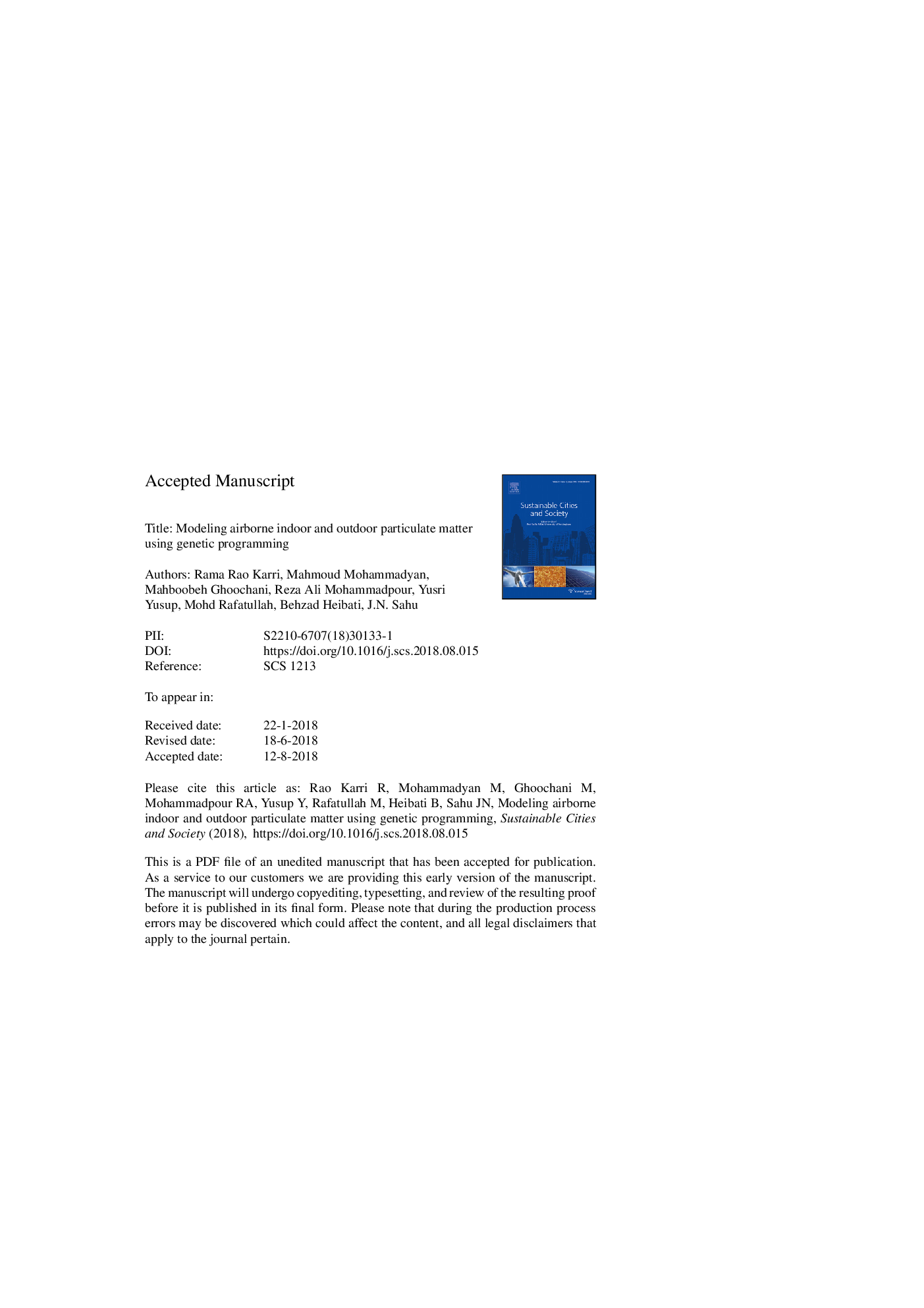| Article ID | Journal | Published Year | Pages | File Type |
|---|---|---|---|---|
| 10132188 | Sustainable Cities and Society | 2018 | 29 Pages |
Abstract
Airborne particulate matter (PM) is considered to be an essential indicator of outdoor and indoor air quality. In this study, indoor and outdoor PM1, PM2.5, PM10 concentrations were monitored at different locations within the Tehran University campus. It is found that 10% of PM1, PM2.5 and PM10 concentrations were higher than 36.11, 52.48 and 92.13âμg/m3 for indoors respectively. Genetic programming (GP) based methodology is implemented to identify the influence of outdoor PM on the indoor PM and established significant empirical models. The best GP model is identified based on fitness measure and root mean square error. It was observed that the GP based models are perfectly able to mimic the behavioural trends of outdoor particulate matter for PM1, PM2.5 and PM10 concentrations. The model predictions are very similar to the measured values and their variation was less than ± 8%. This analysis confirms the performance of GP based data driven modeling approach to predict the relationship between the outdoor particulate matter and its influence on the indoor particulate matter concentration.
Related Topics
Physical Sciences and Engineering
Energy
Renewable Energy, Sustainability and the Environment
Authors
Rama Rao Karri, Mahmoud Mohammadyan, Mahboobeh Ghoochani, Reza Ali Mohammadpoure, Yusri Yusup, Mohd Rafatullah, Behzad Heibati, J.N. Sahu,
